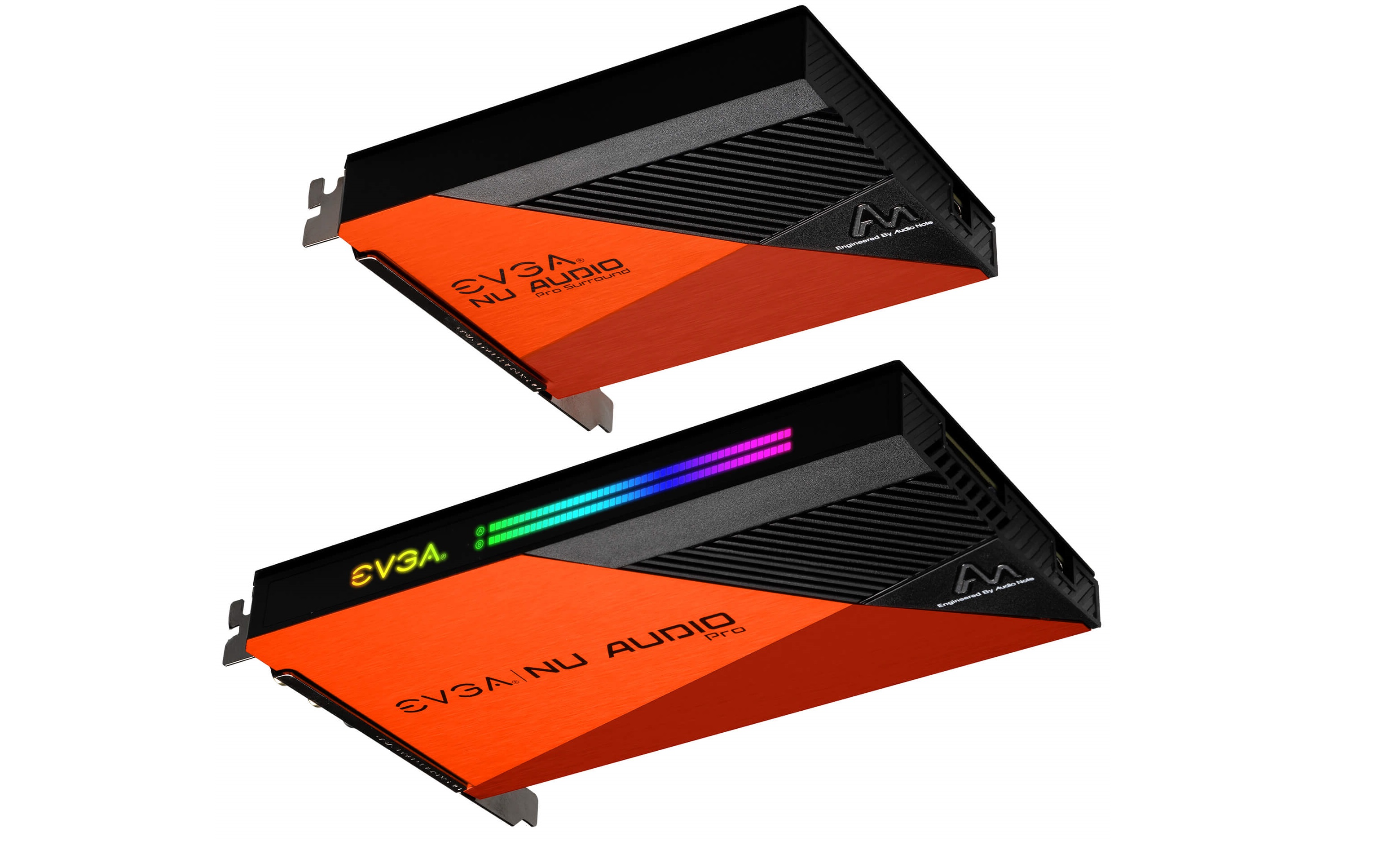EVGA Adds Nu Audio Pro 7.1 Sound Cards With Improved Looks
Some think sound cards are dead because integrated audio has come far, but certain vendors aren't so sure.

You may be surprised to hear that EVGA has a new sound card, considering many enthusiasts have shifted away from that technology. But in January, the vendor better known for their graphics cards launched their first audio card, the Nu Audio. And today, it expanded the lineup even further with the announcement of its Nu Audio Pro 7.1 sound cards. Compared to the non-Pro sound cards, EVGA's new units bring two main areas of improvement: sound and looks.
It’s worth noting that EVGA hasn’t engineered these sound cards all by itself. The product is the brainchild from a collaboration between EVGA and British company Audio Note.
Under the hood, EVGA has added 7.1 surround sound support in the Nu Pro Audio cards; although, you'll have to use the second included "Nu Pro Surround" card to be able to use it. The two audio cards have to be internally connected to each other though, which, oddly enough, happens with a Mini DisplayPort cable. Of course, if you don't need the extra surround channels, you could simply use the primary Nu Pro Audio card only.
The chunky 6.5mm headphone jack resides behind a new headphone amplifier, where EVGA said it installed the LT1469 op-amp for “lusher and more high-quality sound.” The sound card also comes with Audio Note’s own Seiryu capacitors, as well as AVX F95 tantalum capacitors to reduce distortion. At the high-frequency area, the NP0 ceramic caps are upgraded for Panasonic PPS caps.
If you’re into gaming, you’ll also be happy to know that the new sound card comes with Nahimic 3D audio for virtual surround sound through your headset, which should help you identify from where your enemies are creeping up on you.

All this engineering results in some very respectable specifications. The headphone amplifier can handle headphones with impedances ranging from 16-600 Ohms, and the stereo playback occurs with an signal-to-noise ratio (SNR) of 123dB. It can also record with an SNR of 121dB. Over stereo, the card can handle up to 384 kHz audio at 32 bits, and in multichannel that drops to 192 kHz at 32 bits. The optical output is limited to 192 kHz at 24 bits, which isn’t bad by any standards, but you wouldn’t be doing yourself any favors using the optical outputs over the finely tuned DACs and amps in this sound card.
Because this is the Pro card series, EVGA couldn’t stop itself from impleneting what it described as a "bold new cover design to remind you that this isn't your run-of the mill audio card.” We’re not so sure that a "run-of the mill audio card" is really a thing these days. However, the black and orange aesthetic is a notable change from the predecessor sound card's gray and black look.
Get Tom's Hardware's best news and in-depth reviews, straight to your inbox.

The cards have some very neat RGB lighting effects and a full backplate. Better yet, the backplate isn’t even just for looks, as EVGA claims it helps shield the card electronics from interference. You’ll also need a SATA power connection as the PCIe 1x port won’t deliver enough power just by itself.
Currently, EVGA’s cards are available for pre-order from EVGA for $249.99, for which you get the full Nu Audio Pro 7.1 kit. If pre-ordered, the units will ship no later than December 20, just in time for the holidays.
Niels Broekhuijsen is a Contributing Writer for Tom's Hardware US. He reviews cases, water cooling and pc builds.
-
ThatMouse Many motherboard makers don't have great support for their audio chips, including EVGA, as they do not make it themselves. You're off to some taiwanese website to try out several versions of the driver to make it work with Windows 10. So here is more of the same, but with a discrete card, which may fix your issue or make it worse.Reply
The biggest issue with audio today is sync issues only noticeable when watching video, given all the different ways to watch, using a browser, an app, or codec. You'll have various levels of audio being synced up perfectly with the video. -
alextheblue Reply
Dollar per dollar I think the AE-5 is a much better value anyway.ThatMouse said:Many motherboard makers don't have great support for their audio chips, including EVGA, as they do not make it themselves. You're off to some taiwanese website to try out several versions of the driver to make it work with Windows 10. So here is more of the same, but with a discrete card, which may fix your issue or make it worse.
The biggest issue with audio today is sync issues only noticeable when watching video, given all the different ways to watch, using a browser, an app, or codec. You'll have various levels of audio being synced up perfectly with the video. -
AlistairAB Yeap, occasionally Realtek's drivers go all wonky with Windows 10 and it is just easier to spend the money on a sound card and not deal with it anymore. That's the main use case.Reply
